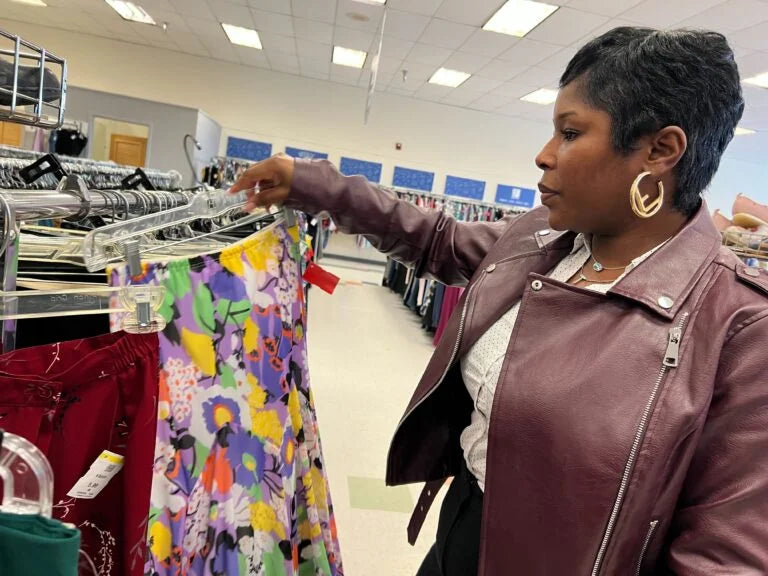In recent months, the American retail landscape has undergone significant changes, particularly in the fashion industry. Former President Donald Trump’s tariffs on Chinese imports and the closure of the “de minimis” loophole have sent shockwaves through the industry, affecting both fast fashion giants and secondhand clothing platforms. These changes are not just about economics; they represent a broader shift in how Americans consume fashion, with implications for sustainability, affordability, and the future of retail.
Understanding the "De Minimis" Loophole and Its Impact
The “de minimis” exemption was a policy that allowed small-value packages, worth $800 or less, to bypass customs duties and tariffs when shipped directly to U.S. consumers. This loophole became a cornerstone for the rise of fast fashion, enabling companies like Shein and Temu to flood the market with cheap, trendy clothing. Between 2016 and 2023, the exemption fueled a staggering 1,145% increase in small, duty-free shipments from China, making fast fashion more accessible and affordable than ever before.
However, this surge came at a cost. The fast fashion industry, bolstered by the “de minimis” loophole, prioritized low prices and rapid turnover over quality and sustainability. This business model has been criticized for its environmental impact, as the constant stream of cheap clothing contributes to waste and pollution. Moreover, the exemption gave fast fashion brands an unfair cost advantage over domestic competitors, including secondhand clothing platforms.
The New Tariffs and Their Implications
In 2025, the landscape shifted dramatically when Trump enacted new tariffs on Chinese imports. The tariffs added a 34% import tax on top of the existing 20% tariff, specifically targeting fast fashion giants like Shein and Temu. This move was coupled with the elimination of the “de minimis” exemption, effectively closing the loophole that had fueled the fast fashion boom.
These changes have immediate and far-reaching implications for both consumers and retailers. For fast fashion companies, the new tariffs mean higher costs, which are likely to be passed on to consumers. This could make fast fashion less competitive in the market, especially as inflation continues to squeeze household budgets. Meanwhile, the closure of the “de minimis” loophole removes a key advantage that fast fashion companies had over domestic competitors.
The Rise of Secondhand Clothing Platforms

While the new tariffs and the closure of the “de minimis” loophole present challenges for fast fashion, they also create opportunities for secondhand clothing platforms like GoodwillFinds and ThredUp. These platforms, which specialize in resale and sustainable fashion, have long argued that the “de minimis” exemption gave fast fashion an unfair advantage. Now, with the playing field leveled, secondhand clothing sellers are poised to gain a significant competitive edge.
Matt Kaness, CEO of GoodwillFinds, has been vocal about the challenges posed by fast fashion. “Our main competition was fast fashion’s low prices and rapid turnover,” Kaness explained. “Many of their items are of low quality and environmentally damaging. Now, with the tariffs and the closure of the loophole, we have the opportunity to show consumers that secondhand clothing can be just as affordable and stylish, without the environmental cost.”
Alon Melnick, strategy officer and general counsel at ThredUp, echoed these sentiments. “All of our items come from American closets,” Melnick noted. “This means we’re largely insulated from the new tariffs and trade measures. We’re confident that this will make us even more competitive in the market, as consumers look for affordable and sustainable alternatives to fast fashion.”
The Shrinking Price Gap Between Fast Fashion and Secondhand Clothing

One of the most significant outcomes of the new tariffs and the closure of the “de minimis” loophole is the shrinking price gap between fast fashion and secondhand clothing. Fast fashion, once the go-to option for budget-conscious shoppers, is now facing increased costs due to the tariffs. This could make fast fashion less competitive, especially as secondhand clothing platforms continue to expand their offerings and improve their customer experience.
For consumers, this shift could be a win-win. On one hand, fast fashion is likely to become more expensive, which could lead to higher-quality, longer-lasting clothing. On the other hand, secondhand clothing platforms are poised to become even more affordable and accessible, offering consumers a sustainable alternative to fast fashion.
The Broader Implications for the Apparel Industry
The changes brought about by the new tariffs and the closure of the “de minimis” loophole have far-reaching implications for the entire apparel industry. For fast fashion companies, the new tariffs and the loss of the “de minimis” exemption mean that they will have to rethink their business models. This could involve investing in higher-quality, longer-lasting clothing, or finding new ways to keep costs low without relying on the loophole.
For secondhand clothing platforms, the opportunities are clear. With the competitive landscape shifting in their favor, these platforms have the chance to capture a larger share of the market. This could lead to increased investment in technology, logistics, and marketing, as well as a greater emphasis on sustainability and ethical practices.
Perhaps most importantly, these changes are part of a broader shift in consumer behavior. More and more Americans are prioritizing sustainability and ethical practices when making purchasing decisions. The rise of secondhand clothing platforms reflects this shift, as consumers increasingly seek out alternatives to fast fashion that are better for the environment and align with their values.
The Future of Fashion Retail

As the apparel industry continues to evolve, one thing is clear: the days of ultra-cheap, disposable fast fashion may be numbered. The new tariffs and the closure of the “de minimis” loophole are just the latest developments in a broader trend toward sustainability and ethical consumption. For secondhand clothing platforms, this trend represents a major opportunity to grow and expand their market share.
For consumers, the shift away from fast fashion and toward secondhand clothing offers a chance to make more sustainable choices without breaking the bank. As the price gap between fast fashion and secondhand clothing continues to shrink, resale platforms are likely to become an even more attractive option for budget-conscious shoppers who also care about the environment.
Ultimately, the changes brought about by Trump’s tariffs and the closure of the “de minimis” loophole are just the beginning. As the fashion industry continues to evolve, we can expect to see even more innovation and change, driven by consumer demand for sustainable, ethical, and affordable clothing.











